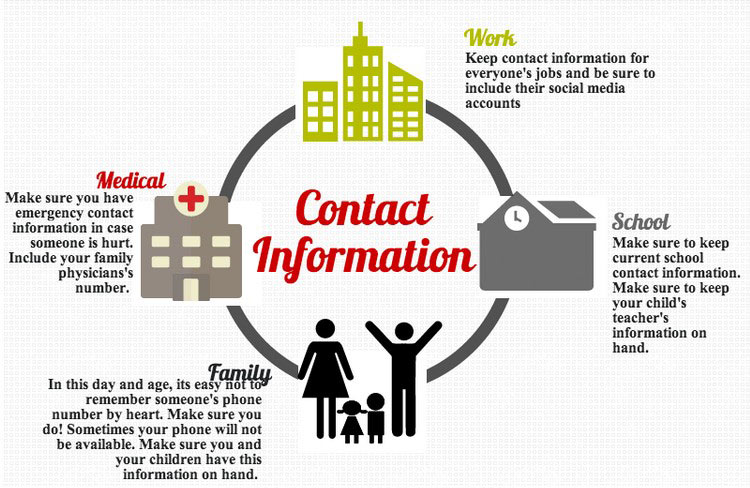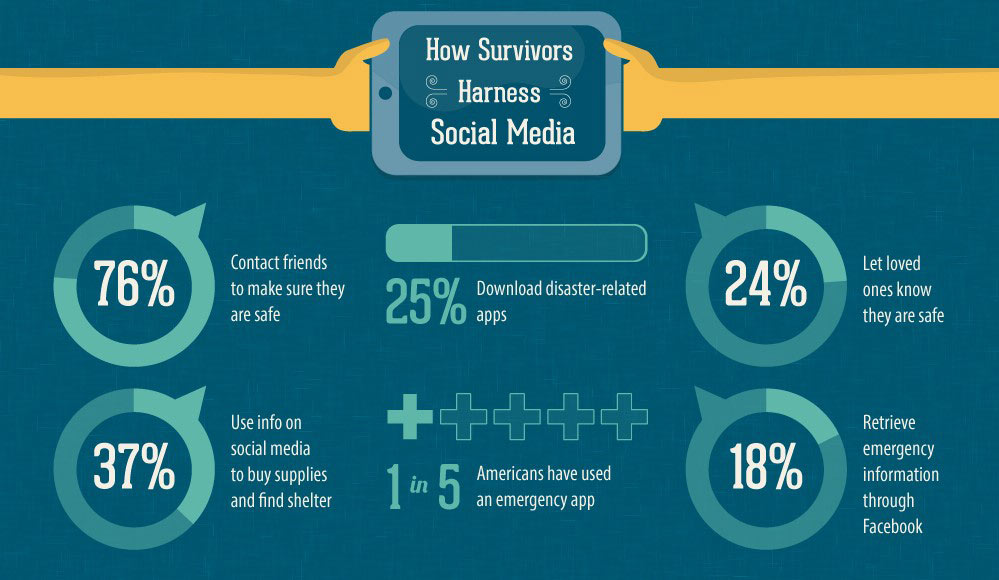This 5-minute guide demonstrates precisely how you can protect your family during a natural disaster.
It's imperative to have a family communication plan prepared before disaster strikes! Inadequate emergency communications are inconvenient at best, and catastrophic at worst. Please read and implement this guide, make adjustments for your situation, then feel free to share it with your family and friends.
In a nation increasingly dominated by cell phones, power is king -- without it, our primary method of communication is reduced to little more than a chunk of useless metal and glass. Unfortunately, we learned a painful lesson in 2012 when Hurricane Sandy rendered cell towers inoperable -- we need to have more ways than our phones to communicate with loved ones during a disaster.
Preparing for Communication During a Natural Disaster
We'd all like to think we're prepared for anything, but a natural disaster can surprise you. If you live in an area prone to tornadoes, hurricanes, earthquakes, and other natural disasters, you should have the following information and items ready at a moment's notice:
- Make a list of local agencies with information on disaster response, school closings, and evacuation plans in your area.You can find this information on your city or town's website.
- Create and distribute contact cards to all family members. These cards should list a meeting place, phone numbers, and contact information for a friend outside the region with whom family members can check in.
- Be sure to have a radio and extra batteries on hand to hear important news updates.

Full Infographic at Frontline Insurance
Find more information on developing a family communication plan at FEMA.gov.
Methods of CommunicationTo increase your chance of survival during a natural disaster, it's imperative to know the tools and methods of communication at your disposal.
Television/Radio
Emergency Alert System
The Emergency Alert System (EAS) sends emergency messages to the nation -- or state and local communities -- simultaneously. These messages are transmitted via:
- Radio
- Television
- Broadcast Television
- Digital Television
- Cable Television
- Satellite Television
- Digital Cable Service
- Wireline Video Providers
- VHF
- UHF
- FiOS
- Mobile
- Land Mobile Radio Service
- Smart Phones
Cable News
In recent years, the Emergency Alert System has seen less and less use as cable news coverage of natural disasters is near immediate. In the event of an emergency, most cable news channels including CNN, CNBC, and The Weather Channel can be good sources of information.
NOAA
The National Oceanic and Atmospheric Administration (NOAA) is a scientific agency within the US Department of Commerce that focuses on the conditions of the oceans and the atmosphere. NOAA warns of dangerous weather via the National Weather Service radio. Certain devices can pick up these transmissions, such as two way radios, SAME receivers, and mobile phones.
A full list of NOAA broadcast frequencies by county.
Amateur Radio
When disaster strikes, amateur radio is used as a means of emergency communication when phones and conventional broadcast systems fail. It might seem ridiculous, but this one-hundred year old technology is still saving lives in the 21st century.
According to the National Association for Amateur Radio,
"Amateur Radio operators set up and operate organized communication networks locally for governmental and emergency officials, as well as non-commercial communication for private citizens affected by the disaster."
Amateur Radio is recognized as a resource by national relief organizations such as FEMA and the National Weather Service. Furthermore, operators have to undergo extensive training and carry a license to broadcast. In the event of a natural disaster, Ham radio operators can relay life-saving information - making them one of your greatest assets.
You can listen to amateur radio transmissions on ham radio receivers, shortwave radios, and some police scanners. There are also places online where you can listen to amateur radio - although it is unlikely you will have internet access during a large scale disaster.
Telephone
During an emergency, far more people are trying to use their telephones at the same time than networks are normally prepared for. This increased calling volume creates network congestion. Here's what you need to know when it comes to using your phone during a natural disaster:
- Limit non-emergency phone calls to:
- free up space on the network for emergency communications
- conserve battery power if you are using a wireless phone
- Keep all phone calls brief. If you need to use a phone, try to use it only to convey vital information to emergency personnel and/or family.
- For non-emergency calls, try text messaging. In many cases text messages will go through when your call may not.
- Wait 10 seconds before redialing a call. Redialing a wireless call multiple times in quick succession can increase network congestion, further limiting the ability of all users to place calls.
- Have charged batteries and car-charger adapters available for backup power for your wireless phone.
- Maintain a list of emergency contacts in your wireless phone.
- Have a family communications plan in place. Designate someone out of the area as a central contact, and make certain all family members know who to contact if they become separated.
Internet
Social media can be used in a natural disaster to check in with friends and family as well as to determine the magnitude of the destruction and obtain further instructions on evacuation or medical care.

Full Infographic at University of San Francisco
Two Way Radio
Natural disasters present a particular problem for cell phones. Once towers go down, a cell phone is useless. Furthermore, most mobile phones will only stay charged for one to three days. If you don't have power to charge it, your method of communication is gone.
This is where two way radios come in. Whereas a ham radio requires a license, a two-way radio does not. It's the easiest communication tool you can buy to keep your family connected should the unexpected happen.
When using two way radios:
- Be brief and efficient; know what you are going to say before using the radio so you don't tie up the channel.
- Repeat back information you receive to confirm that you heard correctly.
- Be aware that conversations are not private on open channels and may be heard by others picking up your frequency.
If possible, carry two of the three methods of communication listed here with you at all times. If you cannot carry them, keep them in a safe place in your home or vehicle. Natural disasters can strike at any time - are you prepared?
